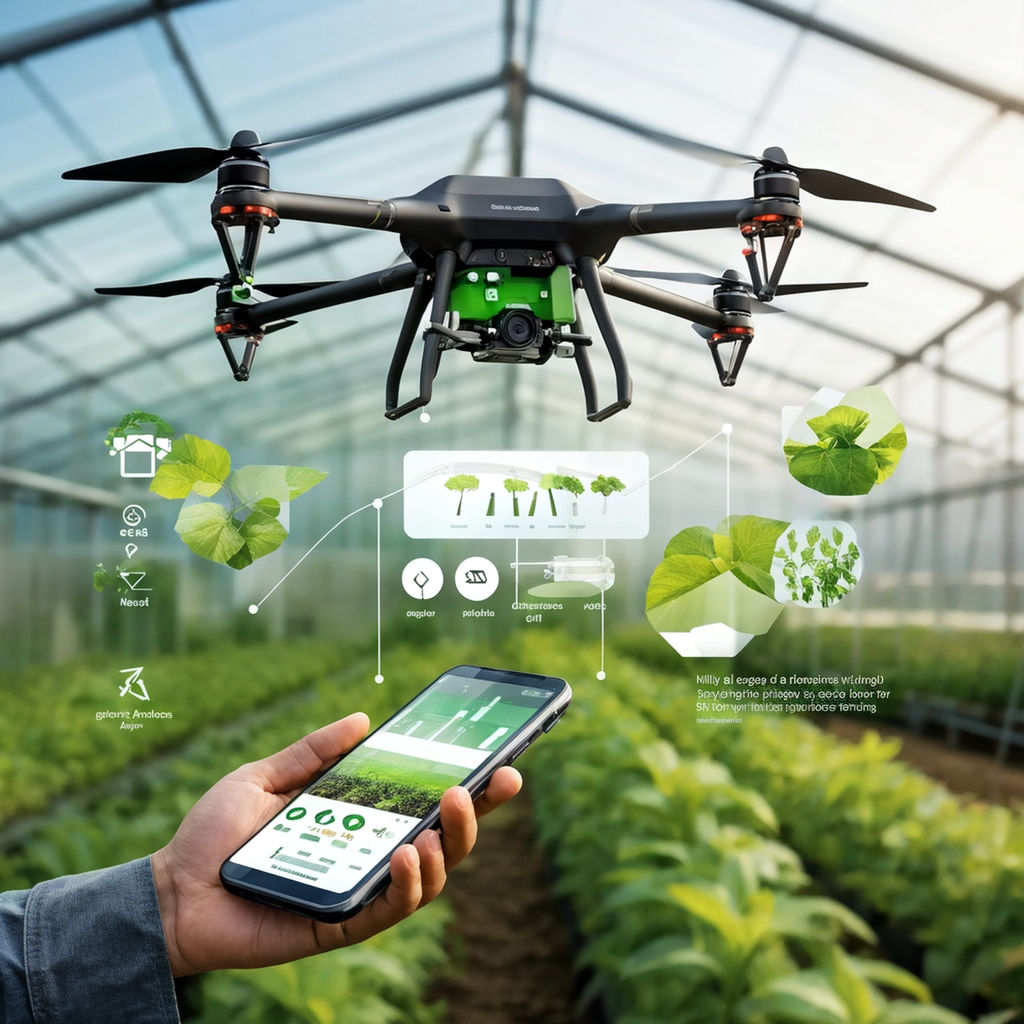Harvest planning is a critical aspect of agriculture that can significantly impact both productivity and profitability. With the advancement of technology, farmers and agricultural businesses are increasingly turning to advanced business intelligence (BI) tools to enhance their harvest planning processes. These tools offer a data-driven approach that helps in making more informed decisions, optimizing resources, and ultimately improving the outcomes of harvest seasons. In this article, we will explore how improving harvest planning with advanced business intelligence can revolutionize agricultural practices, leading to better yields and more efficient operations.
The Importance of Harvest Planning in Agriculture
Harvest planning is a complex task that involves predicting the optimal time to harvest crops, estimating yields, and ensuring that the necessary resources, such as labor and equipment, are available. Traditional methods of harvest planning often rely on historical data and the intuition of experienced farmers. However, these methods can be prone to inaccuracies, leading to suboptimal harvests and wasted resources.
The Role of Business Intelligence in Harvest Planning
Advanced business intelligence systems provide a more accurate and comprehensive approach to harvest planning. By analyzing large volumes of data, including weather patterns, soil conditions, crop health, and market trends, BI tools can generate insights that are not possible with traditional methods. These insights enable farmers to make better decisions regarding when and how to harvest their crops, reducing the risk of crop loss and maximizing profitability.
Key Benefits of Improving Harvest Planning with Advanced Business Intelligence
- Optimized Resource Allocation
One of the most significant benefits of using BI in harvest planning is the ability to optimize resource allocation. BI tools can analyze data to determine the exact amount of labor, machinery, and other resources needed for a successful harvest. This ensures that resources are used efficiently, reducing waste and lowering costs. - Accurate Yield Predictions
Advanced business intelligence systems can accurately predict crop yields by analyzing factors such as soil quality, weather conditions, and historical data. These predictions help farmers plan their harvests more effectively, ensuring that they are prepared for the actual yield and can allocate resources accordingly. - Improved Decision-Making
BI tools provide farmers with real-time data and insights that can improve decision-making throughout the harvest season. For example, if a sudden change in weather conditions is detected, the BI system can recommend adjustments to the harvest plan to minimize the impact on crop quality and yield. - Enhanced Market Insights
Understanding market trends and demand is crucial for maximizing profitability in agriculture. BI tools can analyze market data to identify the best times to harvest and sell crops, ensuring that farmers can take advantage of favorable market conditions and achieve better prices for their produce.
How Advanced BI Tools Work in Harvest Planning
Advanced business intelligence tools utilize a combination of data sources and analytical techniques to provide farmers with actionable insights. These tools typically integrate data from various sources, such as satellite imagery, weather forecasts, soil sensors, and market data, to create a comprehensive view of the factors affecting harvest planning.
Data Integration and Analysis
The first step in using BI for harvest planning is data integration. BI tools gather data from multiple sources and combine it into a single, unified platform. This data is then analyzed using advanced algorithms and machine learning techniques to identify patterns and correlations that can impact harvest outcomes.
Predictive Analytics
Predictive analytics is a key component of advanced BI tools. By analyzing historical data and current conditions, BI systems can predict future events, such as changes in weather patterns or fluctuations in market demand. These predictions enable farmers to plan their harvests more effectively, reducing the risk of crop loss and increasing profitability.
Real-Time Monitoring and Reporting
Advanced BI tools also offer real-time monitoring and reporting capabilities. Farmers can receive up-to-date information on crop health, weather conditions, and other critical factors, allowing them to make informed decisions throughout the harvest season. This real-time data can be accessed from any device, making it easy for farmers to stay connected and responsive to changing conditions.
Implementing Advanced Business Intelligence in Harvest Planning
Implementing advanced business intelligence tools in harvest planning requires careful consideration and planning. Farmers need to assess their current operations and determine how BI tools can be integrated into their existing processes.
Choosing the Right BI Tools
There are many different BI tools available on the market, each with its own set of features and capabilities. Farmers should choose a tool that is tailored to their specific needs and offers the functionality required for effective harvest planning. Key features to look for include data integration, predictive analytics, real-time monitoring, and user-friendly interfaces.
Training and Support
Once a BI tool has been selected, it is important to provide training and support to ensure that it is used effectively. Farmers and their teams should be trained on how to use the tool, interpret the data, and make informed decisions based on the insights provided. Ongoing support should also be available to address any issues or challenges that may arise during implementation.
Continuous Improvement
Implementing BI in harvest planning is not a one-time process. Farmers should continuously assess the effectiveness of their BI tools and make adjustments as needed. This may involve updating data sources, refining algorithms, or integrating new technologies to enhance the capabilities of the BI system.
Conclusion
Improving harvest planning with advanced business intelligence is a game-changer for the agricultural industry. By leveraging data-driven insights, farmers can optimize resource allocation, make accurate yield predictions, and improve decision-making throughout the harvest season. The result is increased efficiency, reduced waste, and higher profitability. As technology continues to evolve, the role of BI in agriculture will only become more significant, offering new opportunities for innovation and growth.
FAQ
What is advanced business intelligence in agriculture?
Advanced business intelligence in agriculture refers to the use of data analytics, predictive modeling, and real-time monitoring tools to improve decision-making in various agricultural processes, including harvest planning. These tools help farmers analyze large volumes of data to gain insights that can optimize operations, reduce costs, and increase yields.
How does BI improve harvest planning?
BI improves harvest planning by providing accurate data and insights on factors such as weather conditions, soil quality, crop health, and market trends. This information allows farmers to make better decisions about when to harvest, how much labor and resources are needed, and how to maximize profitability.
What are the benefits of using BI tools in agriculture?
The benefits of using BI tools in agriculture include optimized resource allocation, accurate yield predictions, improved decision-making, enhanced market insights, and real-time monitoring. These advantages lead to more efficient operations, reduced waste, and increased profitability.
How can farmers implement BI in their harvest planning?
Farmers can implement BI in their harvest planning by selecting the right BI tools, providing training and support to their teams, and continuously assessing and improving their BI systems. Key considerations include data integration, predictive analytics, real-time monitoring, and user-friendly interfaces.
What are the challenges of using BI in agriculture?
Challenges of using BI in agriculture include the need for accurate and comprehensive data, the complexity of integrating multiple data sources, and the requirement for specialized skills to interpret and act on the insights provided by BI tools. However, with the right tools and support, these challenges can be overcome, leading to significant benefits for farmers.



